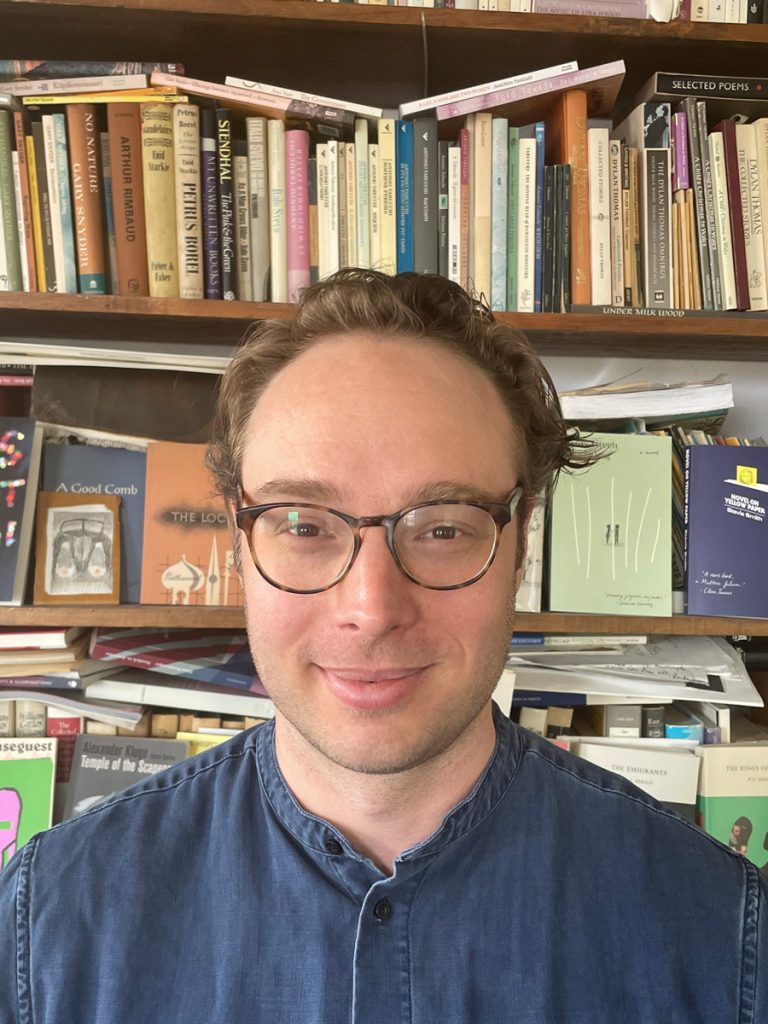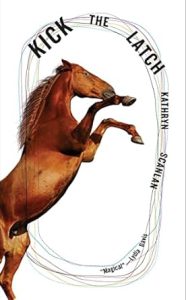
Chris Wait graduated from Vassar College with a degree in English Literature in 2006. He grew up in Saratoga Springs, and has lived and worked in Buenos Aires, Tokyo, Mexico City, Istanbul, and New York, and has been working at New Directions, where he is Director of Subrights and Permissions, and Associate Editor, since 2014.
New Directions was founded in 1936, when James Laughlin (1914–1997), then a twenty-two-year-old Harvard sophomore, issued the first of the New Directions anthologies. “I asked Ezra Pound for ‘career advice,'” James Laughlin recalled. “He had been seeing my poems for months and had ruled them hopeless. He urged me to finish Harvard and then do ‘something’ useful.”
New Directions seeks to publish experimental literature, in any language, that expands the boundaries of form.
Books

New Directions Featured Book
Kick the Latch
Fiction by Kathryn Scanlan
About one woman’s fine, hard life at the racetrack, Kick the Latch–with its ruthless concision and artful mysteries–is lightning in a bottle
Kathryn Scanlan’s Kick the Latch vividly captures the arc of one woman’s life at the racetrack―the flat land and ramshackle backstretch; the bad feelings and friction; the winner’s circle and the racetrack bar; the fancy suits and fancy boots; and the “particular language” of “grooms, jockeys, trainers, racing secretaries, stewards, pony people, hotwalkers, everybody”―with economy and integrity.
Based on transcribed interviews with Sonia, a horse trainer, the novel investigates form and authenticity in a feat of synthesis reminiscent of Charles Reznikoff’s Testimony. As Scanlan puts it, “I wanted to preserve―amplify, exaggerate―Sonia’s idiosyncratic speech, her bluntness, her flair as a storyteller. I arrived at what you could call a composite portrait of a self.” Whittled down with a fiercely singular artistry, Kick the Latch bangs out of the starting gate and carries the reader on a careening joyride around the inside track.
Kathryn Scanlan’s Kick the Latch vividly captures the arc of one woman’s life at the racetrack—the flat land and ramshackle backstretch; the bad feelings and friction; the winner’s circle and the racetrack bar; the fancy suits and fancy boots; and the “particular language” of “grooms, jockeys, trainers, racing secretaries, stewards, pony people, hotwalkers, everybody”—with economy and integrity. Based on transcribed interviews with Sonia, a horse trainer, the novel investigates form and authenticity in a feat of synthesis reminiscent of Charles Reznikoff’s Testimony. As Scanlan puts it, “I wanted to preserve—amplify, exaggerate—Sonia’s idiosyncratic speech, her bluntness, her flair as a storyteller. I arrived at what you could call a composite portrait of a self.” Whittled down with a fiercely singular artistry, Kick the Latch bangs out of the starting gate and carries the reader on a careening joyride around the inside track.
